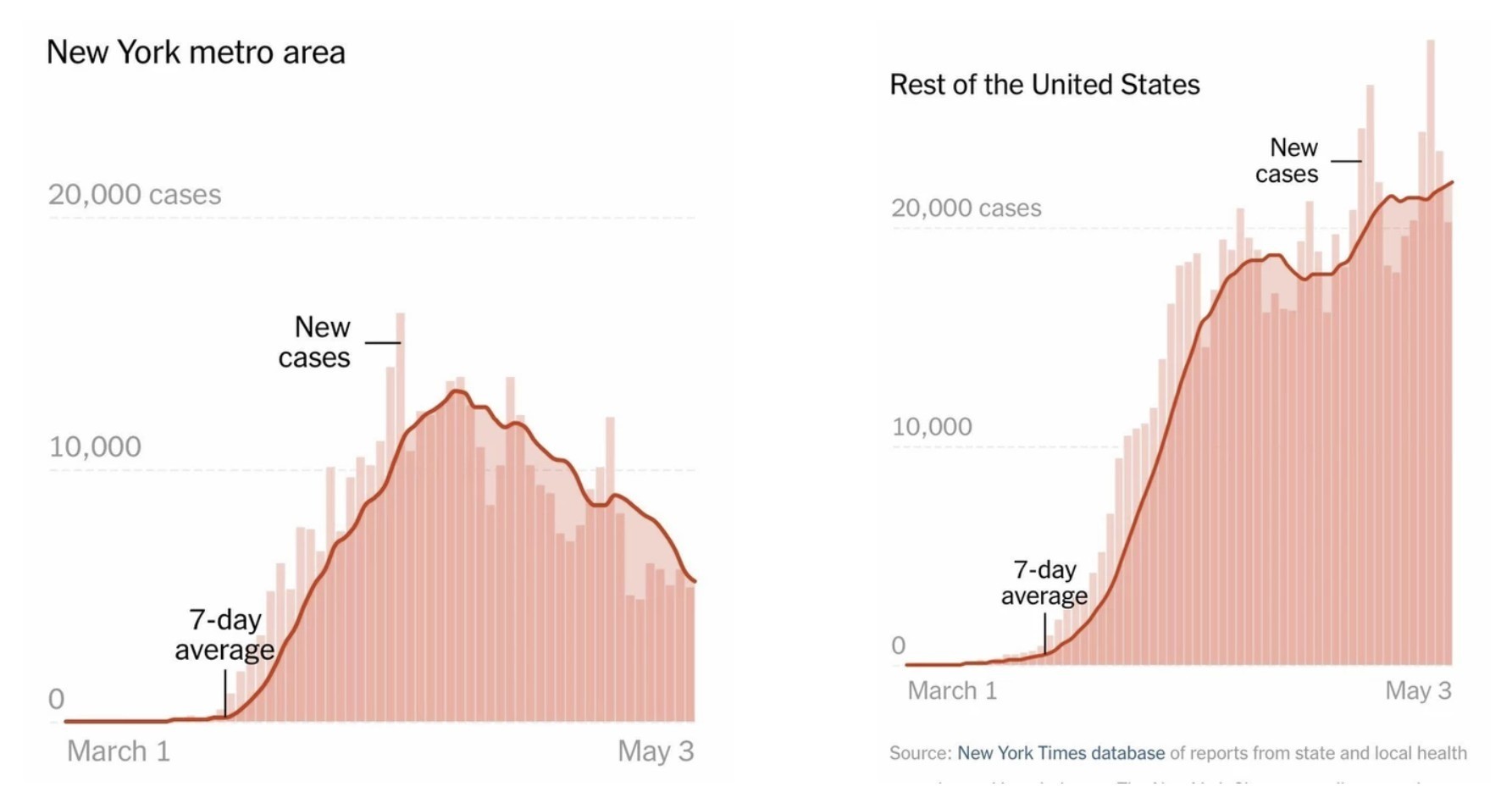Evan Osnos in The New Yorker:
 The story of Trump’s rise is often told as a hostile takeover. In truth, it is something closer to a joint venture, in which members of America’s élite accepted the terms of Trumpism as the price of power. Long before anyone imagined that Trump might become President, a generation of unwitting patrons paved the way for him. From Greenwich and places like it, they launched a set of financial, philanthropic, and political projects that have changed American ideas about government, taxes, and the legitimacy of the liberal state.
The story of Trump’s rise is often told as a hostile takeover. In truth, it is something closer to a joint venture, in which members of America’s élite accepted the terms of Trumpism as the price of power. Long before anyone imagined that Trump might become President, a generation of unwitting patrons paved the way for him. From Greenwich and places like it, they launched a set of financial, philanthropic, and political projects that have changed American ideas about government, taxes, and the legitimacy of the liberal state.
The former congressman Christopher Shays is a moderate Republican who was elected eleven times to represent the Gold Coast, from 1987 to 2009. Now conservatives mock him as a rino—a Republican in name only. “When Sean Hannity calls someone like me a rino, I want to punch him in the nose,” Shays told me. “I got elected as a Republican for thirty-four effing years, and Hannity has never gotten elected for anything.” When Shays talks to former staff and constituents in Connecticut, he has come to recognize the delicate language of accommodation: “I was talking to a guy I know well, after some pathetic thing that Trump did, and his response was ‘Yes, but he’s selecting the right Supreme Court Justices.’ I started to laugh at him, because I know for a fact that’s a minor issue for him.” Shays believes that many Americans quietly share Trump’s desire to reduce immigration and cut social-welfare programs for the poor. “He’s saying what people think, and they appreciate that,” Shays said. “But not many are going to admit that’s why they support him.”
When it comes to the essential question—will Trump get reëlected?—the answer rests heavily on a persistent mystery: how many Americans plan to vote for him but wouldn’t say so to a pollster? In Greenwich, Edward Dadakis, a corporate insurance broker who has been involved with Republican politics for fifty years, told me that many of his friends are “below the radar screen.” He went on, “In a sense, I’m one of them. I’m out there in the public domain, so people know where I stand, but in 2016, for the first election ever, I did not put a bumper sticker on my car.” He worries how strangers will react. He said, “I still have two ‘Make America Great Again’ hats at home, wrapped in plastic.”
More here.

 For a few fleeting moments during New York Gov. Andrew Cuomo’s daily coronavirus briefing on Wednesday, the somber grimace that has filled our screens for weeks was briefly replaced by something resembling a smile.
For a few fleeting moments during New York Gov. Andrew Cuomo’s daily coronavirus briefing on Wednesday, the somber grimace that has filled our screens for weeks was briefly replaced by something resembling a smile. Two thoughts have long come unbidden to my mind whenever I hear people talking about doing their family trees, or, more recently, getting their DNA done. The first is of Bruce Willis’s character in Pulp Fiction, the boxer Butch Coolidge in the back of the taxi, who, when asked by his South American driver what his name means, replies, “I’m an American, baby, our names don’t mean shit.” The other is of Seneca, who wrote in his Moral Letters to Lucilius: “If there is any good in philosophy, it is this, — that it never looks into pedigrees. All men, if traced back to their original source, spring from the gods.”
Two thoughts have long come unbidden to my mind whenever I hear people talking about doing their family trees, or, more recently, getting their DNA done. The first is of Bruce Willis’s character in Pulp Fiction, the boxer Butch Coolidge in the back of the taxi, who, when asked by his South American driver what his name means, replies, “I’m an American, baby, our names don’t mean shit.” The other is of Seneca, who wrote in his Moral Letters to Lucilius: “If there is any good in philosophy, it is this, — that it never looks into pedigrees. All men, if traced back to their original source, spring from the gods.”
 In the dark days of quarantine, I have a habit, born of a fretful insomnia, of rising before dawn. Descending the stairs from my attic room, passing second-floor bedrooms, I imagine I am an all-knowing god of some small universe, like Leo Tolstoy in War and Peace, and can peer into the dreams of my loved ones.
In the dark days of quarantine, I have a habit, born of a fretful insomnia, of rising before dawn. Descending the stairs from my attic room, passing second-floor bedrooms, I imagine I am an all-knowing god of some small universe, like Leo Tolstoy in War and Peace, and can peer into the dreams of my loved ones. Twenty years ago, the US Department of Defense set out a clear warning: “Historians in the next millennium may find that the 20th century’s greatest fallacy was the belief that infectious diseases were nearing elimination. The resultant complacency has actually increased the threat.” Along with other western nations, federal and state governments in America had spent the previous decade or so dismantling public health programmes dealing with communicable diseases in order to concentrate funds on degenerative illnesses: diabetes, heart disease, cancer, stroke. Corporate investment in the development of new vaccines and antibiotics almost dried up, as if the battle that humans had waged over millennia against plague and pestilence had now been won – at least in the developed world. Michael Osterholm, the Minnesota state epidemiologist, informed US Congress in 1996: “I am here to bring you the sobering and unfortunate news that our ability to detect and monitor infectious disease threats to health in this country is in serious jeopardy. . . . For 12 of the states or territories, there is no one who is responsible for food or water-borne disease surveillance. You could sink the Titanic in their back yard and they would not know they had water.”
Twenty years ago, the US Department of Defense set out a clear warning: “Historians in the next millennium may find that the 20th century’s greatest fallacy was the belief that infectious diseases were nearing elimination. The resultant complacency has actually increased the threat.” Along with other western nations, federal and state governments in America had spent the previous decade or so dismantling public health programmes dealing with communicable diseases in order to concentrate funds on degenerative illnesses: diabetes, heart disease, cancer, stroke. Corporate investment in the development of new vaccines and antibiotics almost dried up, as if the battle that humans had waged over millennia against plague and pestilence had now been won – at least in the developed world. Michael Osterholm, the Minnesota state epidemiologist, informed US Congress in 1996: “I am here to bring you the sobering and unfortunate news that our ability to detect and monitor infectious disease threats to health in this country is in serious jeopardy. . . . For 12 of the states or territories, there is no one who is responsible for food or water-borne disease surveillance. You could sink the Titanic in their back yard and they would not know they had water.” In this half-life of quarantine, danger lurks in the unlikeliest of places: the touch of an elevator button, a store-bought carton of milk, my son’s sneeze. Insidious and cunning, death is everywhere around us.
In this half-life of quarantine, danger lurks in the unlikeliest of places: the touch of an elevator button, a store-bought carton of milk, my son’s sneeze. Insidious and cunning, death is everywhere around us. Stuart Jeffries in The Guardian:
Stuart Jeffries in The Guardian: Tyler Cowen interviews Adam Tooze over at Medium:
Tyler Cowen interviews Adam Tooze over at Medium:
 Jonathan Fuller in Boston Review:
Jonathan Fuller in Boston Review: George Scialabba reviews Martha Nussbaum’s The Cosmopolitan Tradition: A Noble but Flawed Ideal in Inference:
George Scialabba reviews Martha Nussbaum’s The Cosmopolitan Tradition: A Noble but Flawed Ideal in Inference: “[W]hat we experience in our dreams … is as much a part of the overall economy of our soul as anything we ‘really’ experience.”
“[W]hat we experience in our dreams … is as much a part of the overall economy of our soul as anything we ‘really’ experience.” “The country Trump promised to make great again has never in its history seemed so pitiful,”
“The country Trump promised to make great again has never in its history seemed so pitiful,”